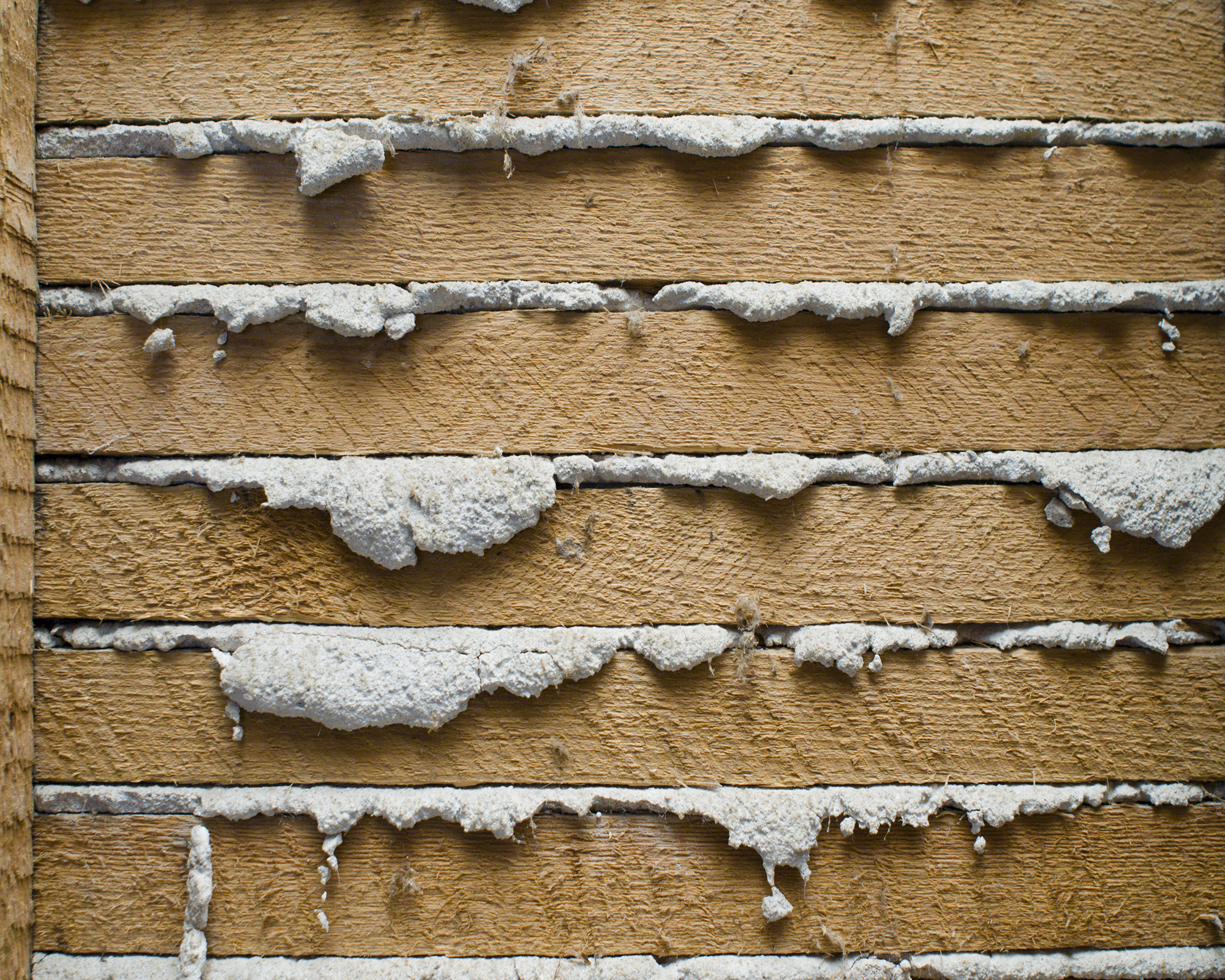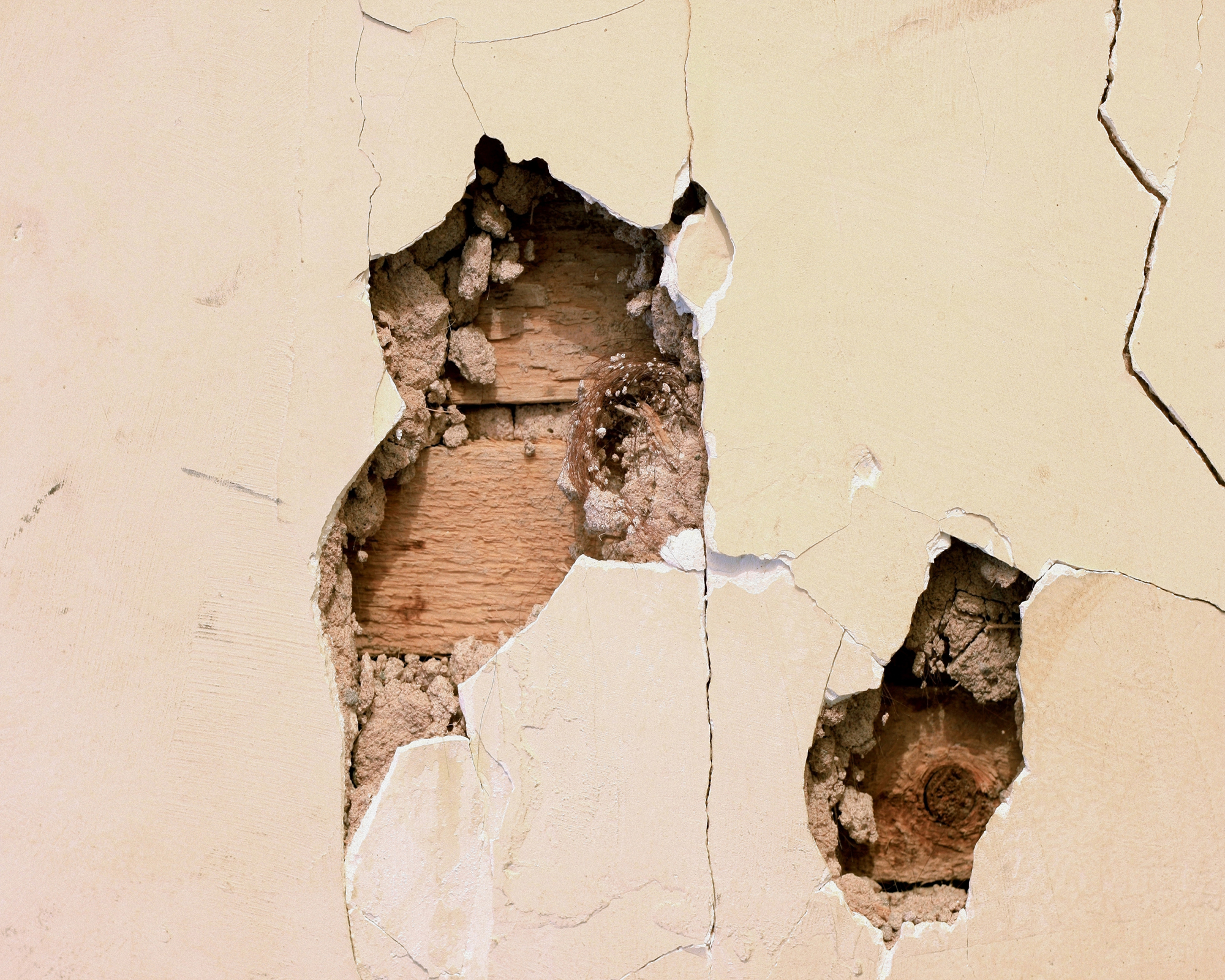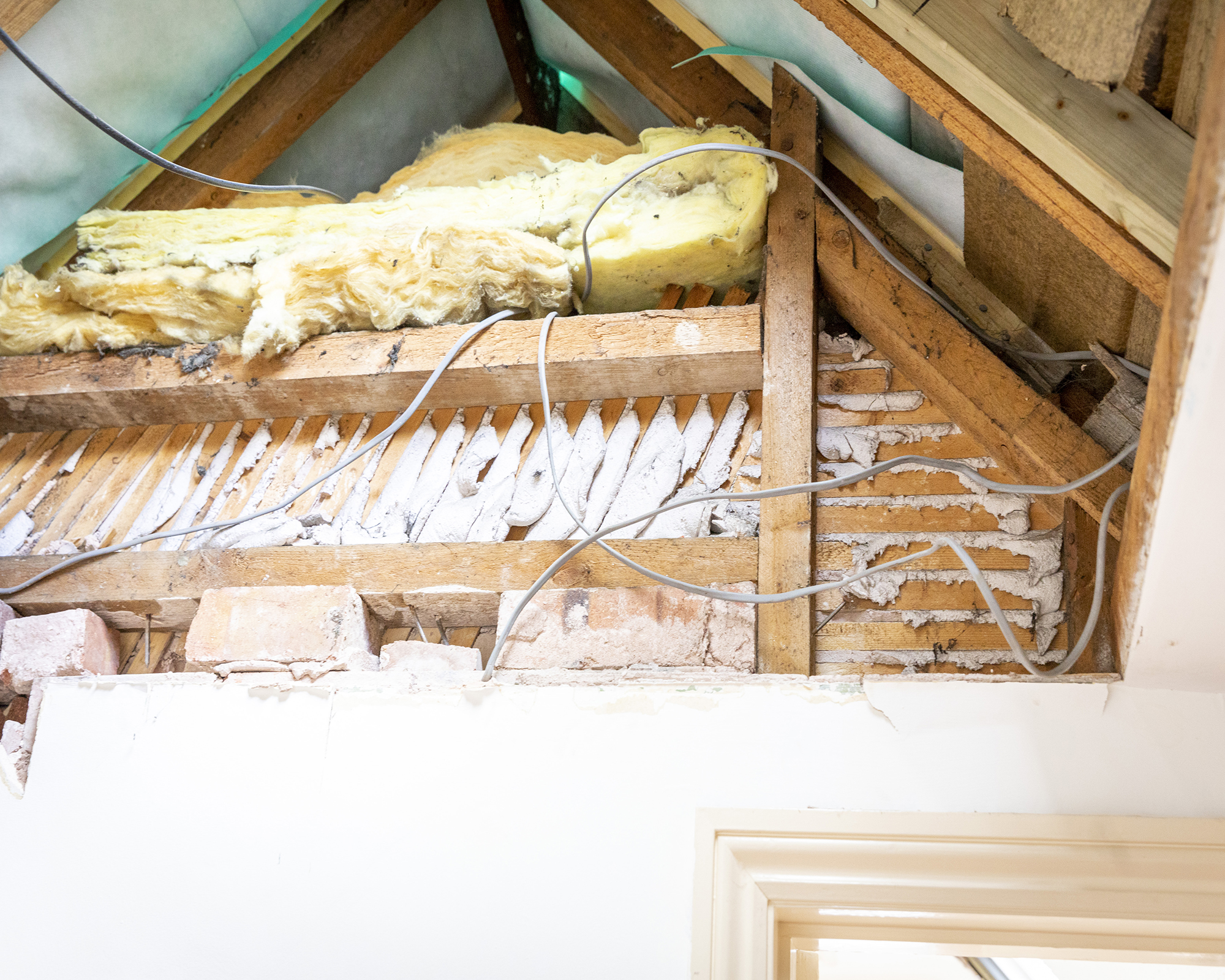What To Use To Repair Lath And Plaster Walls

While lath and plaster isn't used in modernistic construction, if you are the owner of an older property, there'south a possibility that your abode was built using this method.
Lath and plaster was a method of finishing off walls and ceilings used from early in the 18th century correct up until the mid-20th century — when modern methods for plastering walls began to exist used and sheet plasterboard became more commonplace.
If your belongings has lath and plaster, or are considering ownership 1, this guide looks at how they were synthetic and how they tin be repaired if they are, as many will be, showing signs of wear and tear.
What is Lath and Plaster?
Lath and plaster can be identified past the presence of laths, thin strips of timber measuring around 25mm x 6mm, behind the plaster. These would exist nailed to vertical timber joists or posts to form a framework for the wall. Each lath was spaced with gap of around 6mm to take the plaster which would be practical next.
Three coats of plaster were given. The kickoff was a 6mm thick return layer designed to stick to the lath and fill the gaps betwixt each one. Next was a 'floating' layer, again of around 6mm thing. This provided a smoother surface to which the final 'setting' layer could be practical. The setting layer was usually 3mm thick and gave a prissy smoothen cease to decorate.

What Type of Plaster Was Used For Board and Plaster?
The first two layers of plaster that were practical to the board were normally fabricated upwardly of lime putty and sharp sand in a one:3 ratio — oft with animal hair added in to help bind them.
The tertiary layer was commonly made up of lime putty and a fine sand in a three:one mixture — or sometimes but lime putty.
Later on, information technology became mutual to add in gypsum or sometimes cement — this was to speed up the setting procedure between each layer. These mixtures ordinarily used a 1:ane:6 combination of gypsum or cement, lime putty and sharp sand for the initial two coats, then equal parts of lime putty and gypsum for the concluding layer.
How exercise you Repair Board and Plaster Walls?
If you lot live in a house with lath and plaster walls (probable if your house was built earlier 1940) then you might be wondering how to repair damaged board and plaster.
Of class, if your walls are still in good condition, there is no need to touch on them. Simply cheque them regularly and keep an eye on whatsoever new cracks that appear — often but skimming over them with a suitable , lime-based, plaster mix is sufficient.
If, on the other paw, big chunks of your wall or ceiling are coming away, more significant repair work will exist necessary.
At that place are several means in which to repair board and plaster — using modern or traditional techniques, or by learning how to patch plaster.

Modern Repairs to Lath and Plaster
The two most commonly used modern methods mean cutting dorsum the laths and plaster to the nearest studs either side of the damage. You tin can so comprehend the hole in one of two ways.
The commencement fashion (and the ane which is usually preferred by conservation and heritage groups) is to galvanised mesh called Expanded Metal Lathing (EML). This mesh is mailed between studs earlier being plastered over. This method results in an aesthetically pleasing uneven finish similar to that of lath and plaster walls.
The second method is to employ sheet plasterboard to fill up the hole one time the damaged area has been cutting dorsum, fixing information technology in place with plasterboard nails.
In both cases, using a lime-based plaster, similar in texture and density to the original is always advisable.

Traditional Lath and Plaster Repair
There are companies who specialise in lath and plaster repair and if y'all want to remain truthful to the original construction of your dwelling it is well worth because this route.
Some people do choose to acquit out repairs on a DIY basis. In this case, you will need to replace any missing sections of lath, and refasten all loose pieces. You can then re-plaster the walls using a suitable plaster mix. This is a job which frequently looks and sounds easier than it is.
Natasha is Homebuilding & Renovating'due south Associate Editor and has been a fellow member of the team for over two decades. An experienced journalist and renovation adept, she has written for a number of homes titles. She has renovated a terrace and is at the end of the DIY renovation and extension of her Edwardian cottage. She is now looking for her side by side project.
Source: https://www.homebuilding.co.uk/advice/lath-and-plaster
Posted by: ketchumdincestamed58.blogspot.com


0 Response to "What To Use To Repair Lath And Plaster Walls"
Post a Comment